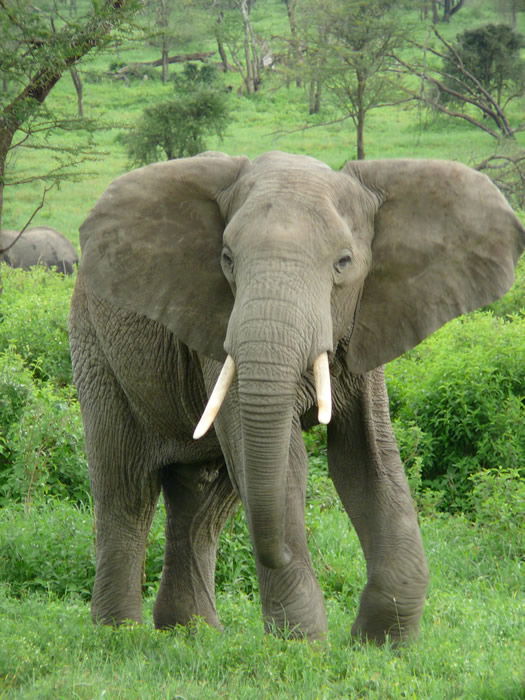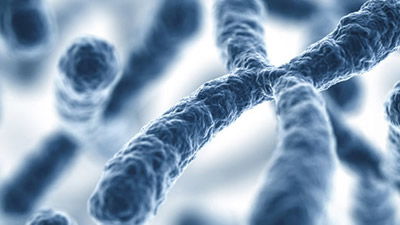
Getting Enough Bodies
How Species Arose After the Ark
In our series thus far, we’ve made a number of revolutionary observations. From Scripture, we derived the fact that Noah likely took just a few thousand animals on board the Ark. Modern, air-breathing, land species arose from these Ark ancestors in a linear manner after the Flood, a fact which is buttressed both by modern genetics and Darwin’s own work.
To understand how this is possible in just a few thousand years, population growth curves are very helpful. In other words, before we can even consider the question of how to generate different traits, we need to know how these Ark ancestors can multiply fast enough to generate enough bodies to possess these new traits.
The rate at which species can multiply is remarkable. While rabbits are well-known in their ability to multiply, characteristically slow breeders still get the job done much faster than you might expect.
For example, two of the slowest breeding species on record are the African and Asian elephant species. Unlike humans, these elephant species don’t keep their babies in the womb nine months. Their gestation time is nearly two years.


Of all the mammal species on earth, the African elephant (left) and Asian elephant (right) are among those that reproduce the slowest. Image of African elephant by nickandmel2006, via Wikimedia Commons; image of Asian elephant by Fir0002/Flagstaffotos, via Wikimedia Commons.
Nevertheless, given the other known population growth parameters,1 the elephant population size can grow quickly. Under these parameters, after 50 years the population size would be 35 individuals—a modest amount. After 100 years, it would be approximately 750 individuals—again, nothing spectacular. But after 200 years, over 300,000 elephants would exist, and after 300 years, over 163 million individuals would exist. By year 500 after the Flood, 35 trillion elephants would roam the earth. In 1000 years, two elephants could produce a population size of nearly 8 x 1026 individuals—that’s 10 with 26 zeros after it!2
Of course, this assumes no predation and sufficient plant resources to support this massive population. Despite this caveat, these calculations clearly demonstrate that elephants could recover enormous population sizes very quickly after the Flood. In light of these facts, we would almost be wiser to ask not whether producing many species in thousands of years is possible, but why more species don’t exist!
These numbers also refute a common objection to the young-earth speciation timescale. Woolly mammoths are a common Ice Age find, and young-earth creationists would put the Ice Age in the few hundred years after the Flood. Young-earth creationists would also likely place the woolly mammoth in the same kind as the modern elephant species. Presumably, the mammoth and the elephants would have similar population growth parameters. If so, producing large enough woolly mammoth population sizes—large enough to explain how Siberia is littered with the remains of woolly mammoths—is no problem for the young-earth creation time scale.
If this is how quickly a slowly reproducing species recovers after the Flood, imagine how quickly the rabbits and rodents could revive!
With bodies accounted for, the only other major question to ask is genetic: With millions of species with unique and stunning genetically encoded features currently roaming earth, where did this genetic diversity come from?
Footnotes
- Population growth parameters include the age at which adults achieve sexually maturity, the length of time mothers spend nursing their offspring before weaning, the average number of babies per pregnancy, the average lifespan of individuals in the species, and so on.
- For equations used to predict these numbers, see the following paper: Nathaniel T. Jeanson and Jason Lisle, “On the Origin of Eukaryotic Species’ Genotypic and Phenotypic Diversity: Genetic Clocks, Population Growth Curves, and Comparative Nuclear Genome Analyses Suggest Created Heterozygosity in Combination with Natural Processes as a Major Mechanism,” Answers Research Journal 9 (2016): 81–122, https://answersingenesis.org/natural-selection/speciation/on-the-origin-of-eukaryotic-species-genotypic-and-phenotypic-diversity/.
Recommended Resources

Answers in Genesis is an apologetics ministry, dedicated to helping Christians defend their faith and proclaim the good news of Jesus Christ.
- Customer Service 800.778.3390
- © 2024 Answers in Genesis






